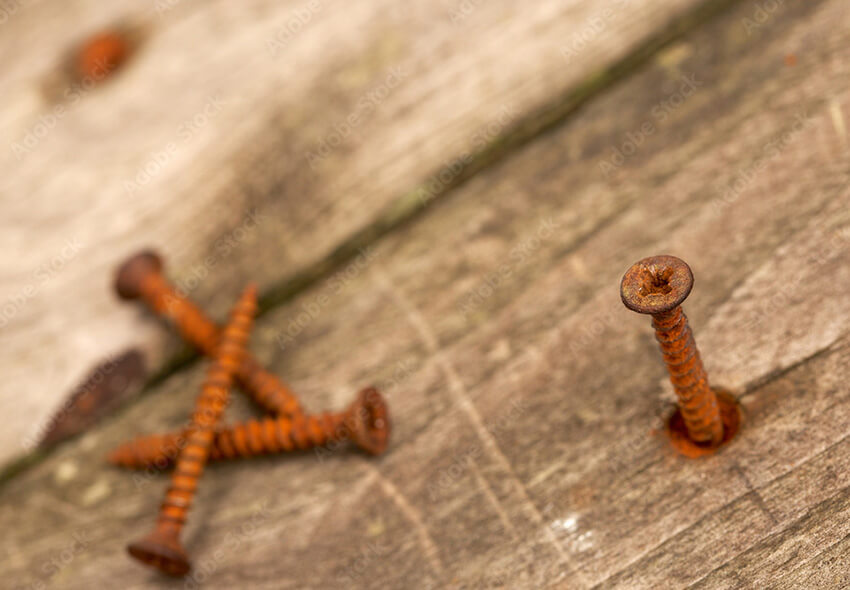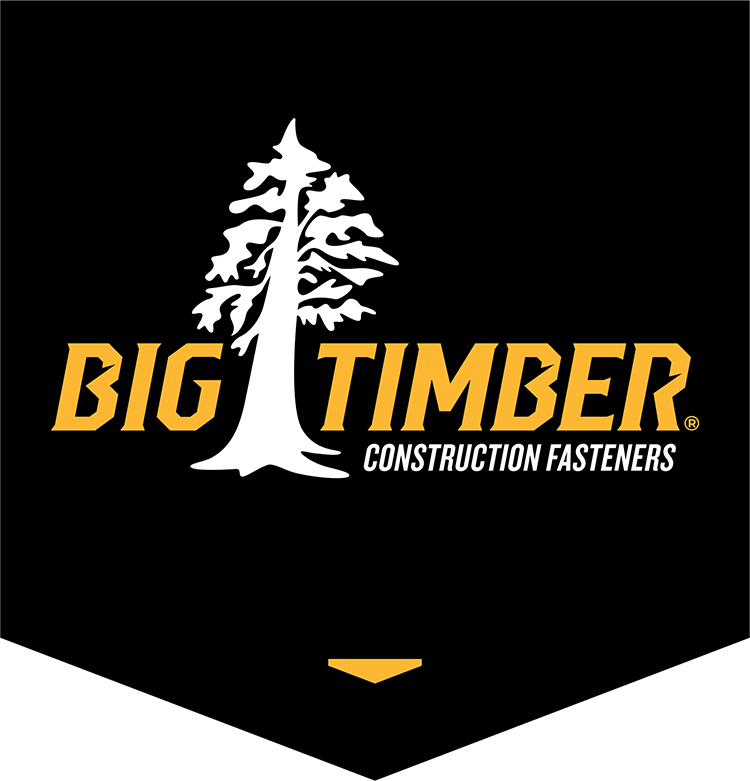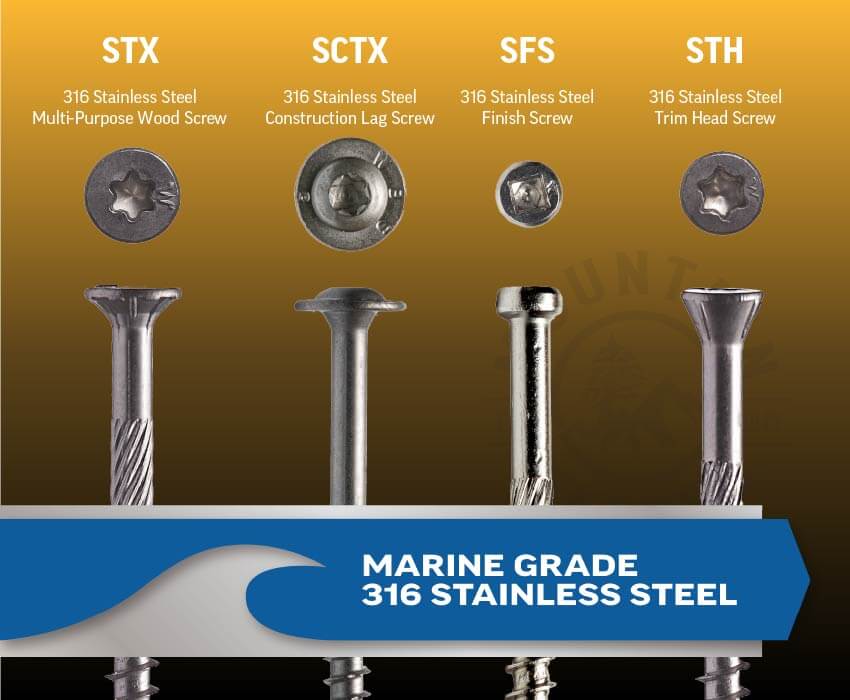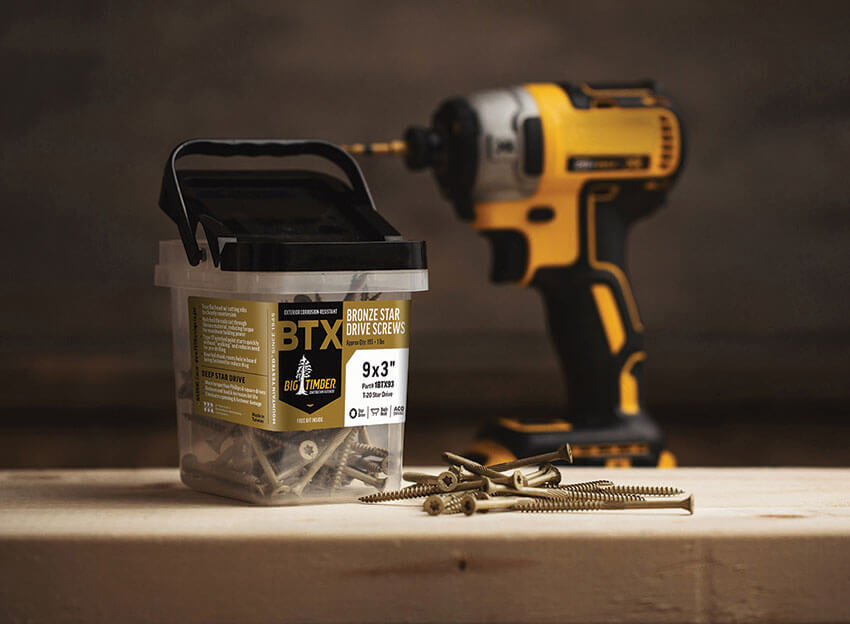
Fasteners play a crucial role in residential construction, providing the strength, stability, and durability required for a safe and long-lasting structure. Despite their importance, many common fastening mistakes can compromise the integrity of a project, leading to structural weaknesses, aesthetic issues, or even outright failure.
At Big Timber Fasteners, we know that using the right fasteners and techniques is essential for success. Here’s a guide to common fastening mistakes and how to avoid them for stronger, safer construction.
Understanding Structural Forces: Withdrawal and Shear
Fasteners are designed to resist two primary structural forces:
- Withdrawal: Resistance along the length of the fastener, parallel to its shank. This force comes into play when trying to pull a screw straight out.
- Shear: Resistance to forces applied perpendicular to the shank. Shear resistance depends on the alloy strength, shank diameter, and the connection between the head and shank.
Torque and Proper Fastener Installation
The Problem: Incorrect torque application can lead to under-tightened or over-tightened fasteners, both of which can compromise the connection.
- Under-Tightening: Leaves joints loose and prone to failure.
- Over-Tightening: Damages threads, weakens fastener integrity, and can distort connected materials.
The Solution:
- Use tools with adjustable torque settings to ensure even stress distribution.
- Proper torque prevents screw loosening or failure due to vibrations or harsh environmental conditions, enhancing project durability.
Choosing the Right Materials
The Problem: Using incompatible materials or failing to account for environmental conditions can weaken fasteners and compromise the structure.
- ACQ Compatibility: ACQ is a lumber preservative, but can be corrosive to steel.
- Corrosion: Environmental factors like moisture, salt spray, or chemicals accelerate metal degradation.
The Solution:
- Select fasteners suited for the material and conditions, such as 316 Marine Grade Stainless Steel for high-moisture environments.
- Look for screws marked ACQ compatible to avoid your treated lumber corroding your screws.
Accounting for Material Movement
The Problem: Materials like wood or composite expand and contract with changes in temperature and humidity. Over-tightening can cause splitting, warping, or joint separation.
The Solution:
- Follow manufacturer guidelines for fastener spacing and techniques like leaving gaps to allow for material movement.
Using the Correct Fasteners
The Problem: Using the wrong fastener for the job can compromise the strength and longevity of the connection. Common issues include:
- Using cheap or commodity fasteners
- Using screws of inappropriate size or strength.
- Using nails where screws are more suitable.
The Solution:
- Use the Big Timber Fastener Finder Tool to select the best product for your project.
- Refer to technical evaluation reports (TERs) on our website for detailed screw specifications.
Proper Fastener Placement
The Problem: Placing fasteners too close to edges, too far apart, or in inappropriate locations weakens connections and can cause material damage.
The Solution:
- Follow spacing guidelines found in Big Timber’s TERs
- Maintain proper distances from edges and between fasteners for optimal strength.
Avoiding Overdriving and Underdriving
The Problem: Overdriving damages material surfaces, while underdriving leaves connections loose, leading to joint failure.
The Solution:
- Use variable-speed drills or impact drivers with depth control to achieve the perfect fit without damaging materials.
Using Interior Only Fasteners on Exterior Projects
The Problem: Using non-corrosion-resistant fasteners in moisture-prone environments or exposed to weather leads to rust and deterioration.
The Solution:
- Choose fasteners with appropriate coatings, like BTX for outdoor projects.
- Use 316 Marine Grade Stainless Steel Fasteners for areas exposed to salt or chemicals.
Build Better with Big Timber Fasteners
Avoiding these common fastening mistakes ensures your construction projects are safer, more durable, and longer-lasting. With high-quality products like Big Timber Fasteners, you can build with confidence knowing every connection is designed for superior performance.
Explore our range of Mountain Tested™ fasteners and use our online tools, such as the Fastener Finder and TER resources, to make informed decisions for your next project.
Visit your local retailer or go to www.bigtimberfasteners.com today to get started.




